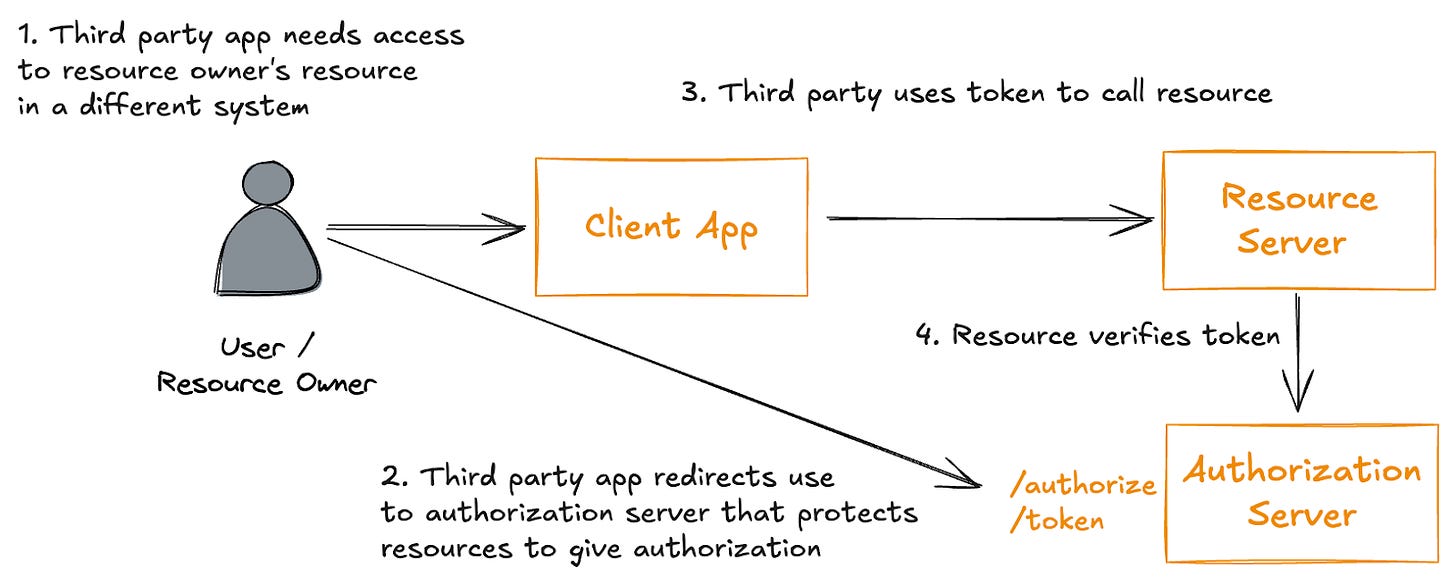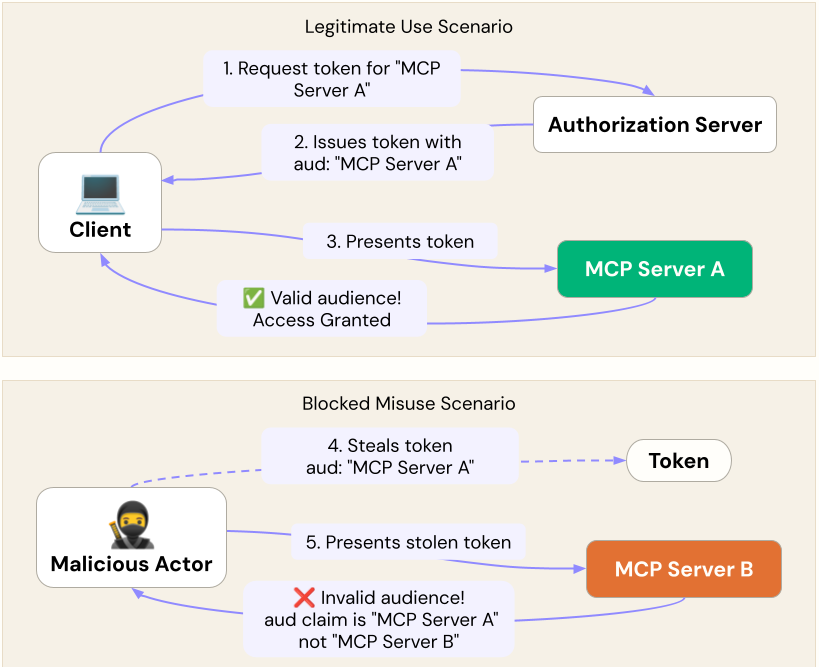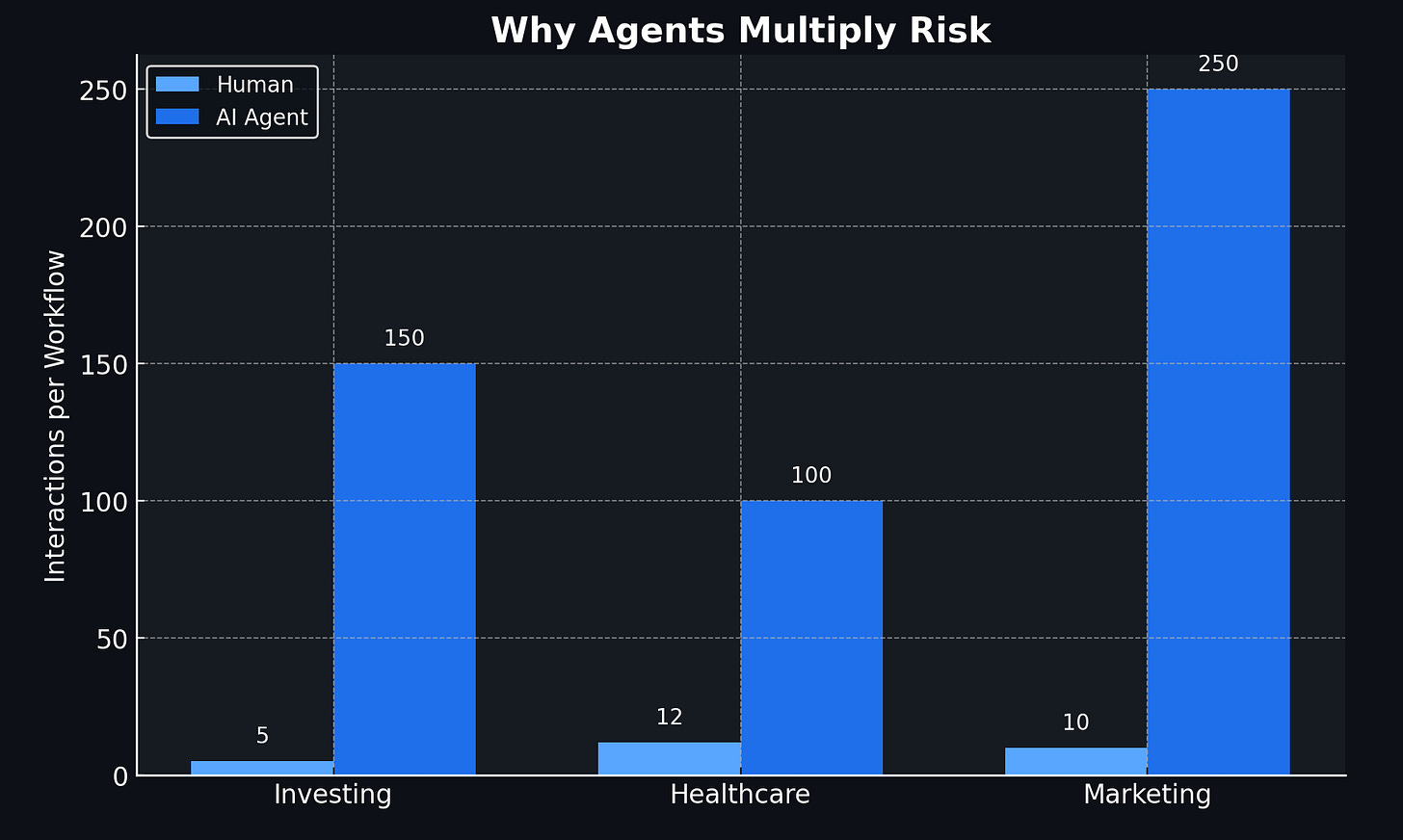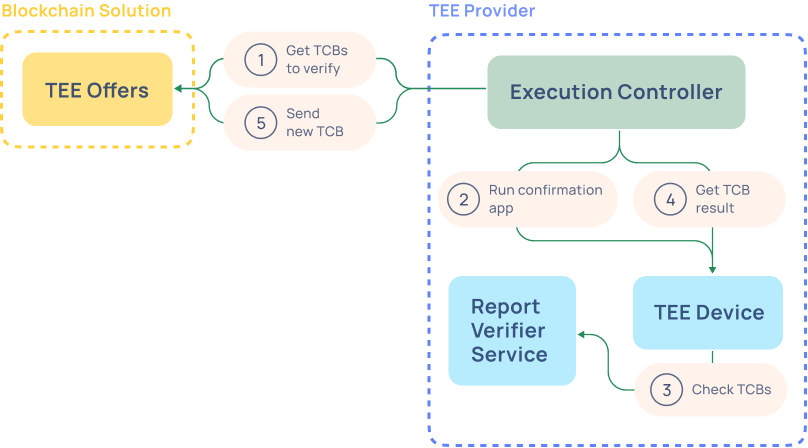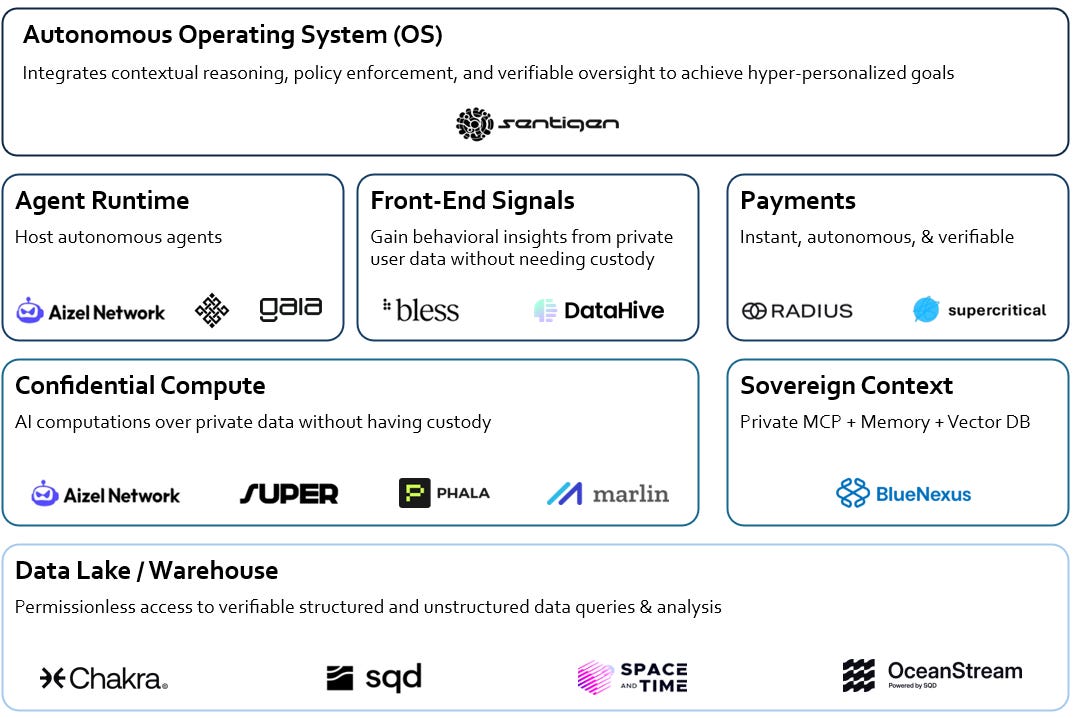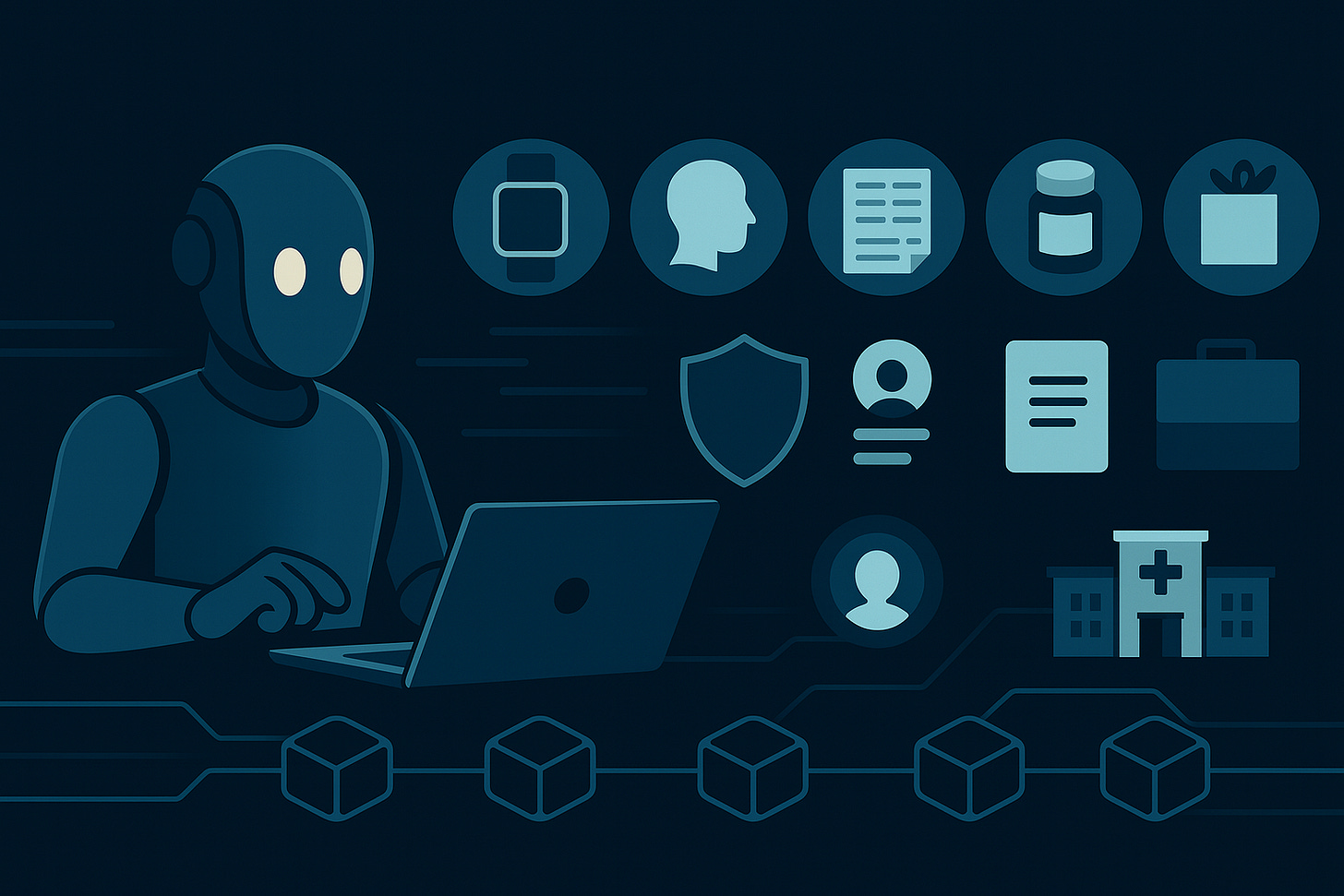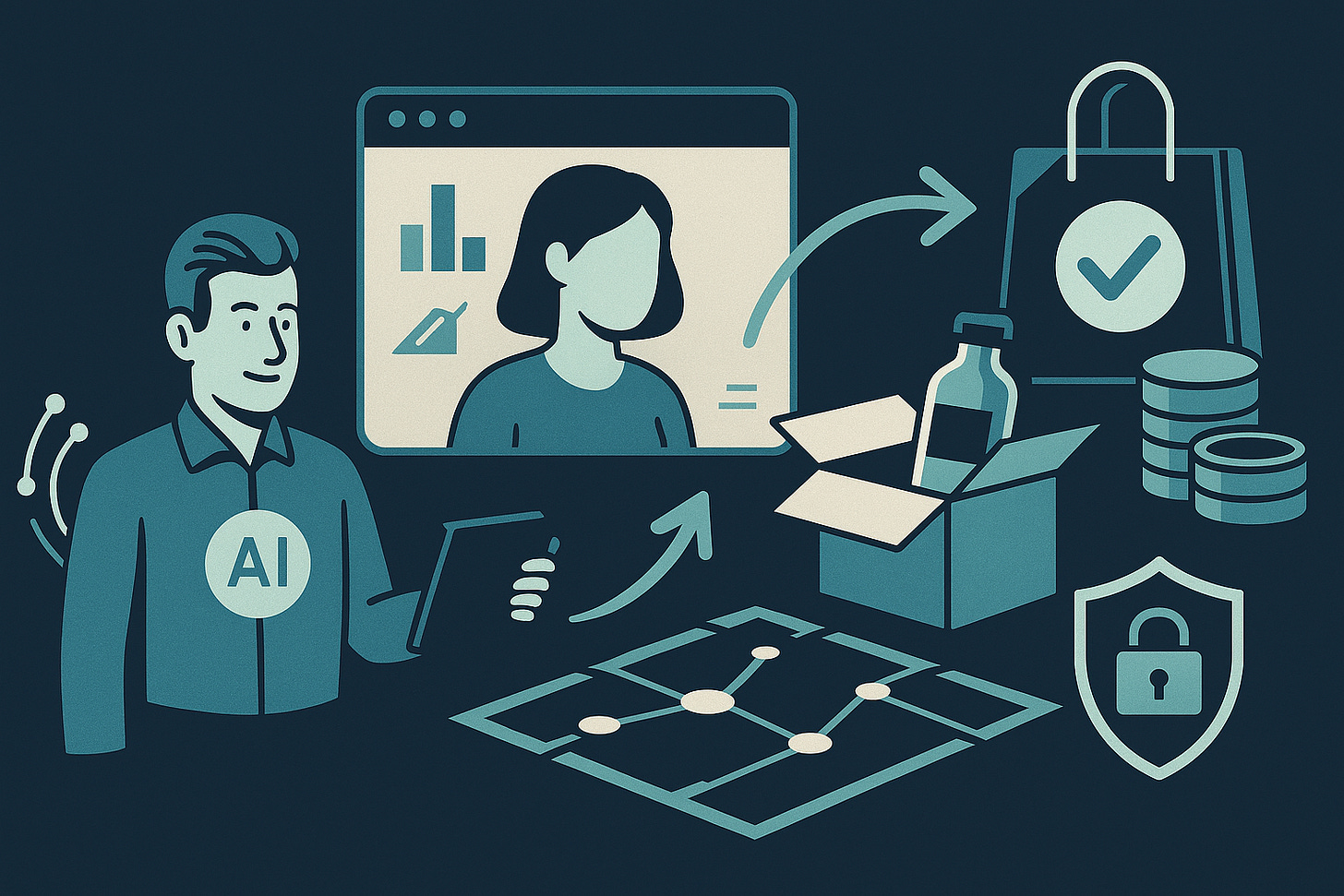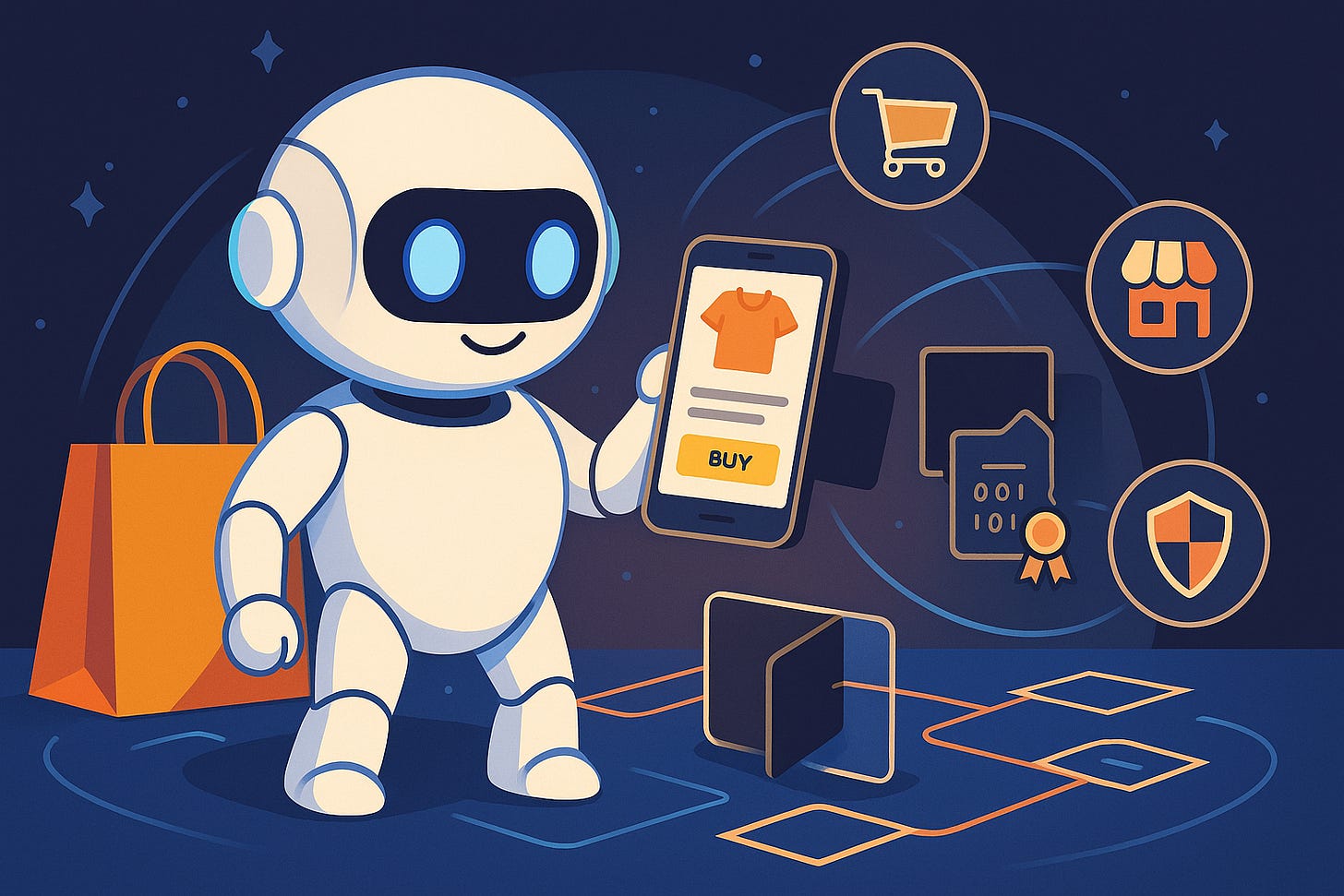WTF Does "AI-Native" Even Mean?
From digital ownership to autonomous agents: the real Web3 story
The phrase “AI-native” has become a common marketing badge for companies eager to sound future-proof; yet rarely does anyone explain what it actually means.
In networking infrastructure, it refers to systems that allow agents to carry out human-defined objectives by making independent decisions and operating continuously (across companies, markets, and jurisdictions) without requiring human approval at every step.
That level of AI autonomy demands more than powerful algorithms; it demands an internet built for machines.
Unfortunately, today’s web was build for humans: passwords expire, APIs break, and every workflow depends on a gatekeeper. Agents operating in this environment stall in short sessions, get trapped behind logins, or lose access when a custodian flips a switch.
That’s where blockchain comes in. Self-sovereign identity, tamper-proof execution, and always-on reliability (the very traits that let smart contracts run without intermediaries) are precisely what autonomous agents need to operate and scale.
For years we framed Web3 as a story of digital ownership; while technically correct, we were missing the forest for the trees.
Blockchain provides the trust layer, yet the true paradigm shift is autonomous AI, ushering in a fundamentally new era of the internet.
AI-native = Web3
Web3 emerged from the idea that software logic should be able to be executed on a tamperproof ledger, allowing verifiable programs to run without requiring a middleman.
Some just wanted independence from institutional control. Others envisioned a future of composable money and compute.
Rather than relying on banks, brokers, or cloud providers, you could trust the network itself. Once deployed, a contract executed autonomously: open, tamper-evident, and verifiable, regardless of who was watching.
That same architecture turns out to be perfectly suited for AI agents.
Agents, like smart contracts, need to operate autonomously, make decisions, and coordinate across different systems without constant human oversight. They need infrastructure that is:
Always on: no dependency on a single server or login token.
Verifiable: every action can be audited on an open ledger.
Composable: agents can chain together different services and still trust the results.
The irony is that this wasn’t the original goal of Web3. But the properties that allow blockchains to run trustless smart contracts also make them the perfect facilitator of autonomous AI.
Compute legos were never meant for humans; they were meant for AI.
Human-centric technology becoming obsolete
The consumer internet, enterprise SaaS, and mobile app ecosystems were engineered for human use, not autonomous software. Credential systems such as OAuth and multi-factor authentication assume a person will log in, click “approve,” and maintain a short session.
Typical OAuth workflow:
This human-centric design collides with the requirements of machine-led workflows:
Ephemeral sessions: Tokens expire, CAPTCHAs interrupt, and MFA demands a click, forcing agents to stall mid-task.
Fragmented identity: Every platform issues its own credentials, leaving agents unable to carry a portable, persistent credentials across domains.
Custodial control: Providers can revoke access without warning, cutting agents off mid-workflow.
Expanded attack surface: Each additional API becomes another point of entry for hackers; as the U.S. AI Safety Institute warns, “AI agent hijacking arises when a system lacks a clear separation between trusted internal instructions and untrusted external data.”
more systems x higher frequency x greater authority = dramatically larger attack surface
Without a trustworthy way to prove authenticity and authority, autonomy quickly devolves into a playground for exploits and abuse. To keep AI agents transparent, accountable, and secure, they need a neutral foundation; an immutable public ledger that records and verifies every action.
Facilitating autonomy without sacrificing security
Blockchain provides the missing element.
It makes identity and access portable, cryptographically secured, and owned by the agent itself. Instead of stitching together fragile logins across countless systems, Web3 infrastructure orchestrates complex, cross-platform workflows with no single point of failure.
Resilience is built in. Because the network runs across thousands of independent nodes, it keeps operating even when parts fail or come under attack. What began as an ideological experiment has matured into mission-critical AI infrastructure.
Gartner calls trust, privacy, and auditability non-negotiable for enterprise adoption; BCG warns that agents cannot scale without them. Yet the most valuable data, medical, financial, personal, has remained largely off-limits to autonomous systems given (justifiable) security and privacy concerns.
Web3 changes that. It doesn’t just plug gaps in trust; it opens entirely new frontiers.
While regulated enterprises, financial institutions, and medical facilities can already deploy agents within secure internal environments today, those agents remain tightly confined and limited in scope. They excel at combing internal logs and enforcing compliance, yet miss the larger canvas of markets, partners, and real-time global signals.
Web3 unlocks both worlds, enabling agents to harness external data and compute resources without disclosing sensitive information (via confidential computing), all while sustaining HIPAA-, SOX-, and GDPR-grade compliance that can be audited instantly.
(A TEE Confirmation Block (TCB) can prove that sensitive data or computation really happened a secure enclave without being tampered with; Super Protocol)
This is not an “incremental” upgrade. Agents can now cross silos to anticipate disease before symptoms appear, move capital as economic conditions shift, or file regulatory reports the moment events unfold.
The breakthrough isn’t just more data; it’s the right data, accessed securely and applied autonomously. AI stops acting like a consultant and begins operating as a true actor in the world.
Web2 leaders scrambling to adapt
Incumbent heavyweights see the same shift on the horizon.
Databricks and Snowflake, titans of enterprise data, are pouring billions into a future where AI agents, not humans, are the primary users. Their recent moves, Databricks’ $1 billion acquisition of Neon and Snowflake’s $250 million purchase of Crunchy Data, make clear exactly where the market is headed.
Postgres, one of the world’s most ubiquitous databases, powers everything from banking apps to hospital systems. It’s rock-solid and dependable, but it was built for people: analysts running reports, developers building applications, teams querying data.
Neon and Crunchy Data each set out to reimagine Postgres for a machine-first era.
Neon (Databricks): Designed for instant elasticity. Databases can spin up, process a task, and vanish within seconds, ideal for AI agents that need ephemeral workspaces to handle real-time data. Databricks sees this agility as essential to becoming the default platform for agent-driven computing.
Crunchy Data (Snowflake): Engineered for trust and regulatory rigor. Crunchy hardened Postgres for banks, governments, and healthcare, where compliance and durability are non-negotiable. By bringing it in-house, Snowflake strengthens its position as the secure environment for agents handling sensitive workloads.
Databricks is betting on speed and flexibility, while Snowflake is betting on trust and governance.
Both acknowledge the same reality: yesterday’s infrastructure was designed for human operators, not autonomous software.
They’re both racing to retrofit the backbone of enterprise computing into an execution layer where agents can truly think and act.
What they already excel at
Modern Web2 stacks, Databricks, Snowflake, Neon, Kafka, Flink, move data in real time, coordinate complex workflows, and give enterprises mature governance controls that look agent-ready.
Where the gap remains
They still depend on custodial control, leaving single points of failure and multiplying the attack surface with every new connection. Agents still lack portable, self-owned identities that can travel seamlessly across systems.
And they always will.
Web2 rails are inherently incapable of ensuring end-to-end data custody and privacy once information moves across different platforms.
Infrastructure for agent autonomy
The competition between Databricks and Snowflake offers a glimpse of the infrastructure AI agents will ultimately demand. Their recent upgrades (while still a step behind true Web3 capabilities) signal a deeper architectural transformation, one that can be framed as an AI-native stack built on verifiable layers.
Think of the stack as a modern city: roads and utilities at the bottom, services in the middle, and smart city control on top. The magic that lets it all click together is simple: every step produces a tamper-evident receipt. By removing the need for trust, systems achieve seamless, secure composability that naturally fosters autonomy.
AI-Native Tech Stack (non-exhaustive list):
AI-native, autonomous applications
The following concepts show how the AI-native stack can leap from abstract infrastructure into everyday experiences. Each idea takes the same core breakthrough: cryptographic receipts that prove actions without exposing private data, and turns it into a novel service people can immediately understand and trust.
1) Personal Health Monitoring & Diagnosis
Stack: Data Lake + Confidential Compute + Sovereign Context + Agent
Functionality: An AI health agent reviews your entire health footprint: smartwatch data, voice patterns, lab results, pharmacy history, even grocery purchases, to spot patterns no single doctor could catch. It connects subtle signals (like a drug interaction unique to your genetics) and books the right specialist with a clear, plain-language brief and recommended plan.
Novelty: Life-saving insight without risky (or illegal) data sharing. Your encrypted health vault stays patient-owned, analysis happens inside secure enclaves, and every result includes a cryptographic proof. Hospitals keep their records, you keep control, and your AI can act on the full picture without exposing raw files.
2) Autonomous Growth Loop for Marketing
Stack: Front-End Signals + Data Lake + Confidential Compute + Payments + Agent
Functionality: Instead of chasing clicks, an AI marketing agent finds micro-creators whose audiences actually purchase products, runs live tests across channels, ships samples, and pays only when a verified purchase happens. Budgets shift automatically to what performs, creating a durable first-party signal asset along the way.
Novelty: Every conversion comes with cryptographic proof and instant, auditable payouts. Brands keep control of their data, creators get paid for verified results, and ad platforms can’t hide behind vanity metrics or bot traffic.
3) Universal Shopping Concierge
Stack: Front-End Signals + Data Lake + Confidential Compute + Payments
Functionality: A single AI assistant searches every brand and marketplace, bundles the best deals, checks out for you, and issues a cryptographic “proof pack” showing exactly which partners drove the sale. Payments split automatically among brands, marketplaces, and creators; no disputes, no spreadsheets.
Novelty: Shoppers get instant, privacy-safe purchases and verified bargains. Brands gain trusted attribution and fewer chargebacks. Creators get paid the moment a sale is confirmed.
Education remains a hurdle for adoption
Web3 rails may be more secure and resilient than Web2, but regulators and consumers will never trust what they don’t understand.
Education is the bridge between technical strength and real adoption.
Without clear explanations, users hesitate and regulators push back. Utility alone isn’t enough; people need to see how something once impossible is now provably safe. Without that clarity, skepticism hardens into resistance.
Education must turn complexity into something tangible and verifiable. Regulators need confidence that blockchain meets or exceeds existing standards; consumers need to understand how it protects them.
Progress depends on doing both: building products whose value is unmistakable and telling the story in a way that makes them credible. Only then can blockchain move from misunderstood niche to trusted foundation for the next wave of digital innovation.
Web3 = internet of autonomous AI
Web “3.0” was supposed to mark a step-function leap beyond the internet of the past 20 years. Blockchain gave us interesting new financial rails…but not a “new internet”. That leap is arriving now, driven by the emergence of autonomous AI.
The world is still underestimating how radically and quickly everything is about to change. PMF is here. Those who see it today are left wondering how everyone else can’t.
It’s hard to overstate the satisfaction of seeing these use cases move from speculation to reality, validating the conviction behind them. For years I’ve written about theoretical future use cases enabled by Web3’s “novel functionality”. I knew the underlying tech was unique, but the “so what?” was extremely hard to articulate.
That’s no longer the case.
The infrastructure is live, the applications are real, and the convergence of Web2, Web3, and autonomous AI has already begun.
About M31 Capital
M31 Capital is a global investment firm dedicated to crypto assets and blockchain technologies that support individual sovereignty.
Website: https://www.m31.capital/
Twitter: https://twitter.com/M31Capital



